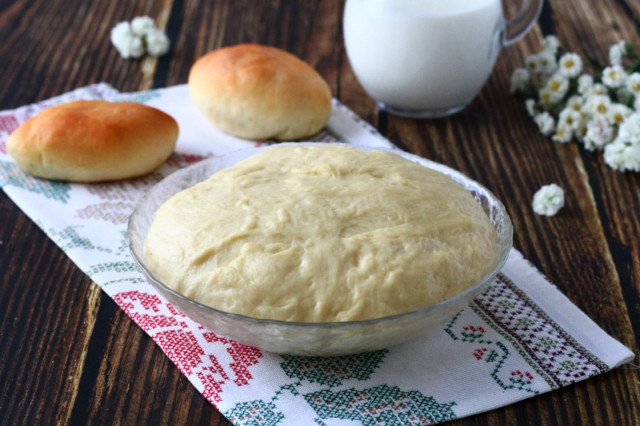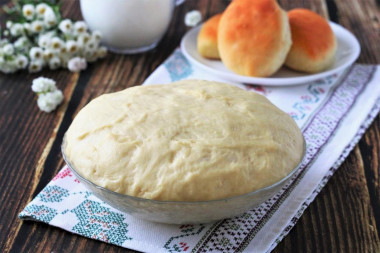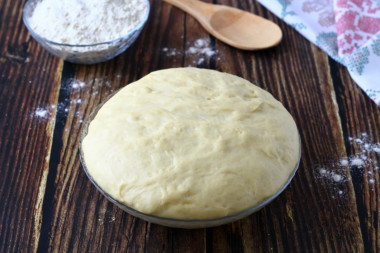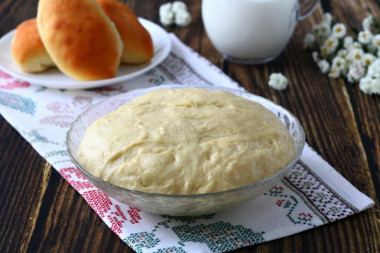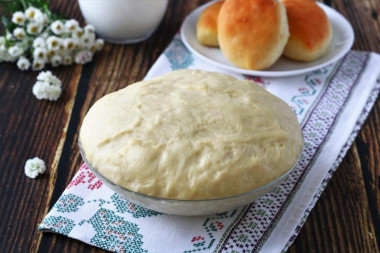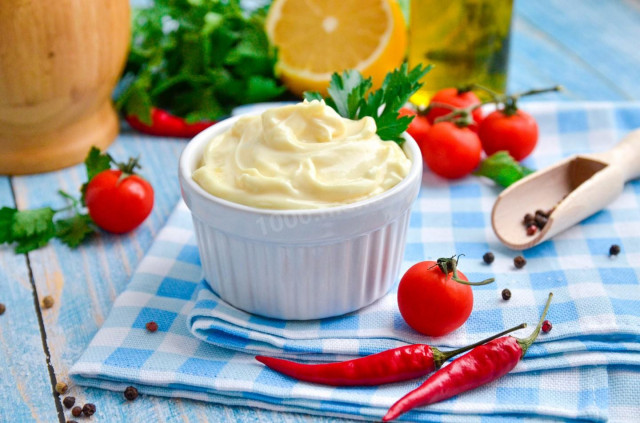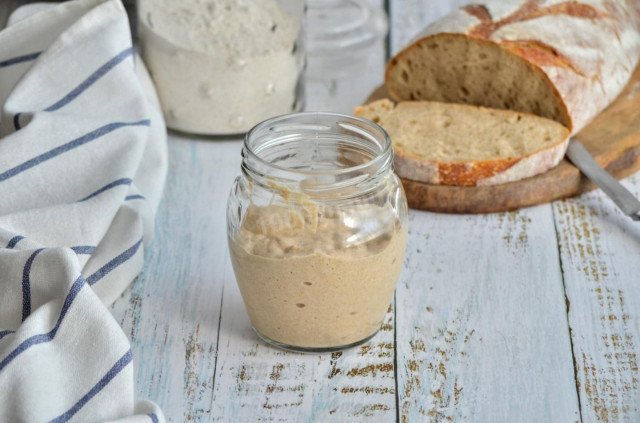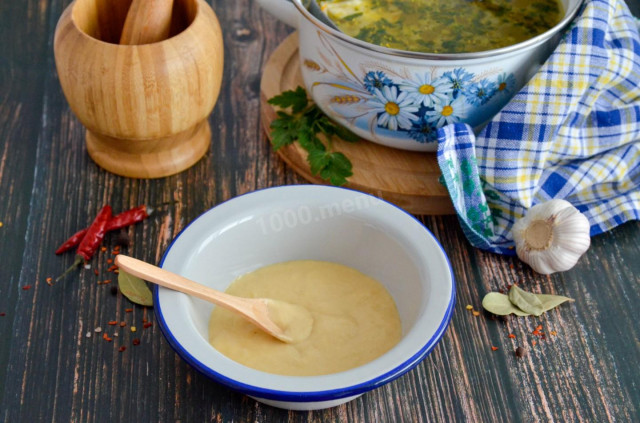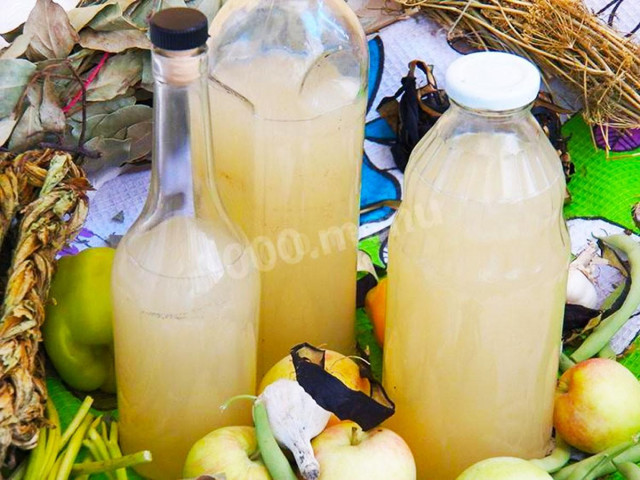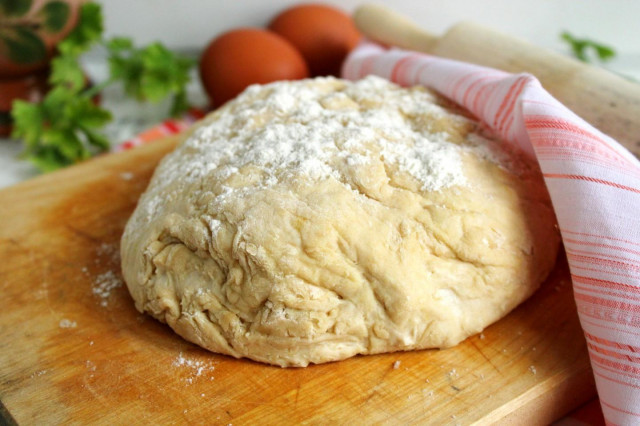Composition / ingredients
Step-by-step cooking
Step 1:
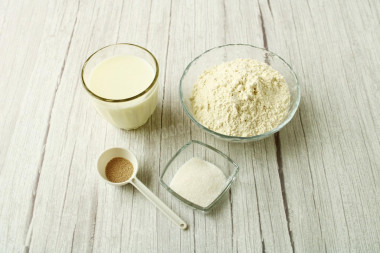
Preparing a soft dough for pies in the oven, start by preparing the sourdough. Heat the milk slightly, it should be slightly warm, non-hot. Wheat flour is better to take the highest grade.
Step 2:
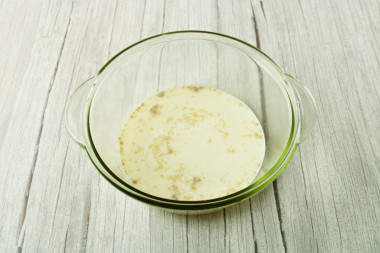
Combine yeast and warm milk in a convenient container. Add sugar to activate the action of yeast. Stir so that the yeast dissolves well.
Step 3:
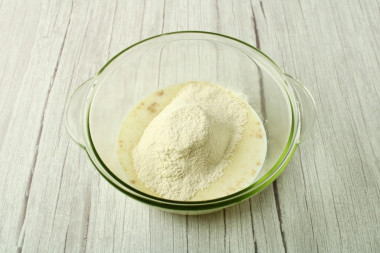
Pre-sift the flour, this will saturate it with air, and the dough will be easier to rise. You can sift the flour directly into the container.
Step 4:
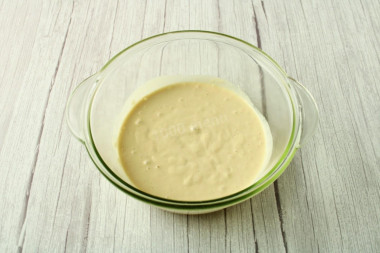
Mix everything with a whisk until smooth. The resulting mass is similar in consistency to thick sour cream. Cover the sourdough and leave it in a warm place for fermentation for 1-1.5 hours. The time will depend on temperature conditions and yeast activity.
Step 5:
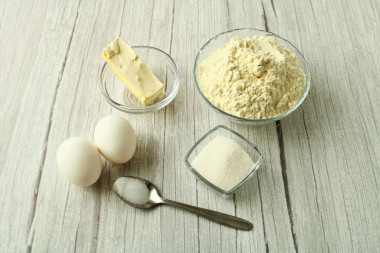
Prepare the necessary ingredients for further dough preparation. They should be at room temperature.
Step 6:
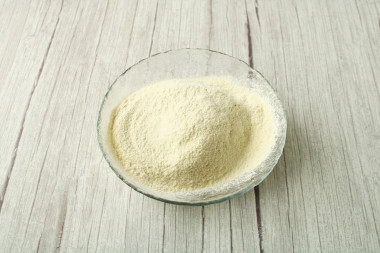
Sift the flour well through a fine sieve.
Step 7:

Dissolve the butter over low heat, cool slightly.
Step 8:
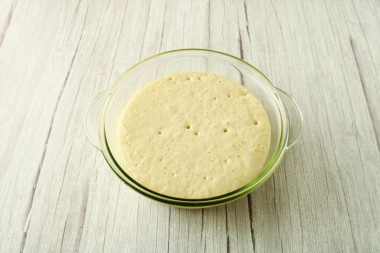
When the dough increases in volume by 2-2.5 times and large bubbles appear on the surface, you can start kneading the dough.
Step 9:
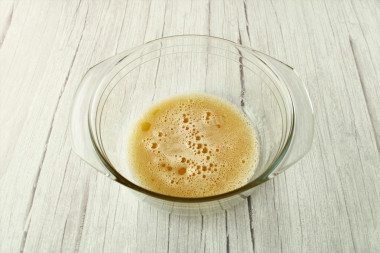
Considering that the dough will rise, take a spacious, capacious kneading container. Beat the eggs with sugar and salt until smooth.
Step 10:
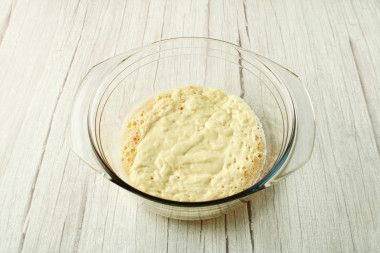
Add the approaching sourdough, mix.
Step 11:
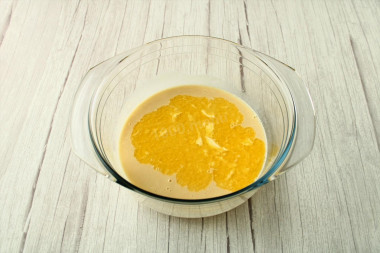
Pour in the non-hot melted butter, mix.
Step 12:
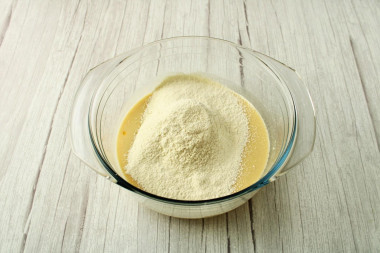
Add about 3/4 of the sifted flour, mix.
Step 13:
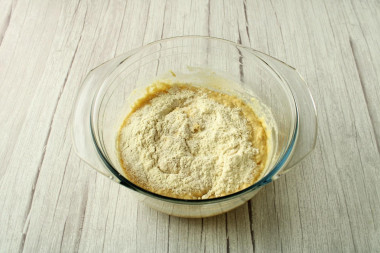
Add the rest of the flour in small portions, while stirring the dough. Keep an eye on its consistency. Flour may need more or less, it depends on its properties.
Step 14:
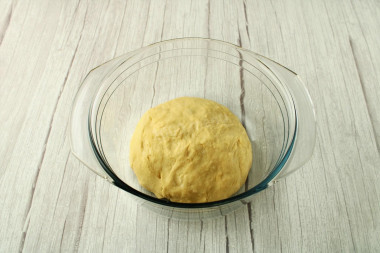
Knead the dough. It should be soft, very slightly sticky to the hands. The dough should keep its shape, but it should not be tight. Leave the dough to rise for 1-1.5 hours.
Step 15:
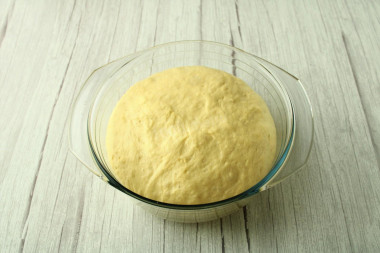
During this time, the dough has increased in volume by 2-2.5 times.
Step 16:
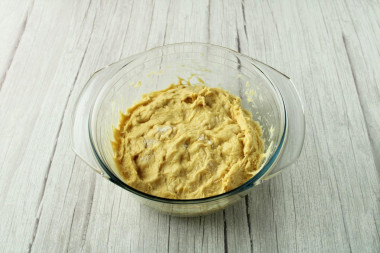
Knead the dough to expel the accumulated carbon dioxide and resume fermentation. At the same time, you can powder your hands with flour or lubricate them with vegetable oil so that the dough sticks less. Leave the dough to rise again for 40-50 minutes.
Step 17:
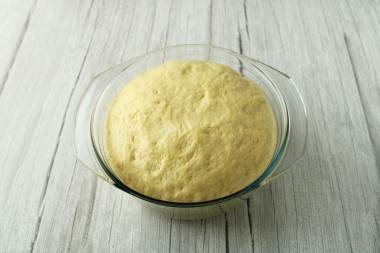
When the dough is maximally increased in volume, knead it again by placing the dough on a table sprinkled with flour. Then proceed to the cutting.
Step 18:
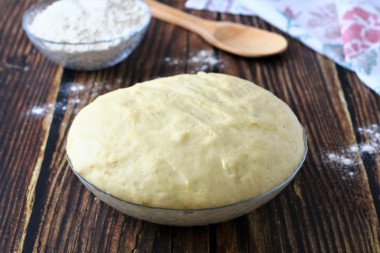
When forming pies, you do not need to use a rolling pin. The dough can be easily kneaded with your hands, so soft and pliable it turns out. Have a good baking!
Dough prepared in the sourdough way is especially suitable for pies cooked in the oven. Any filling, both sweet and unsweetened, will do. The dough contains a sufficient amount of muffin, so baking from it will be soft, lush and delicious.
Important! Using dry yeast, it should be borne in mind that they occur in two forms: active and instant (read the instructions carefully before use!).
It is advisable to use active dry yeast for this recipe. They look like beads or small balls. Before applying them, they must be brought out of the "sleep mode". Active dry yeast must be brought to complete dissolution in the liquid, otherwise, due to the remaining grains of sourdough, it may rise badly and the baking will be spoiled (yeast grains that have not dissolved in the liquid and got into the dough will not disperse on their own, which means they will not work).
It should also be remembered that dry yeast may differ in its activity from different manufacturers.
Be prepared for the fact that flour may need more or less than indicated in the recipe. Focus not on the amount of flour, but on the desired consistency of the dough. To avoid mistakes, read about flour and its properties!
Caloric content of products possible in the composition of the dish
- Whole cow's milk - 68 kcal/100g
- Milk 3.5% fat content - 64 kcal/100g
- Milk 3.2% fat content - 60 kcal/100g
- Milk 1.5% fat content - 47 kcal/100g
- Concentrated milk 7.5% fat content - 140 kcal/100g
- Milk 2.5% fat content - 54 kcal/100g
- Chicken egg - 157 kcal/100g
- Egg white - 45 kcal/100g
- Egg powder - 542 kcal/100g
- Egg yolk - 352 kcal/100g
- Ostrich egg - 118 kcal/100g
- Granulated sugar - 398 kcal/100g
- Sugar - 398 kcal/100g
- Butter 82% - 734 kcal/100g
- Amateur unsalted butter - 709 kcal/100g
- Unsalted peasant butter - 661 kcal/100g
- Peasant salted butter - 652 kcal/100g
- Melted butter - 869 kcal/100g
- Salt - 0 kcal/100g
- Wheat flour - 325 kcal/100g
- Dry yeast - 410 kcal/100g

